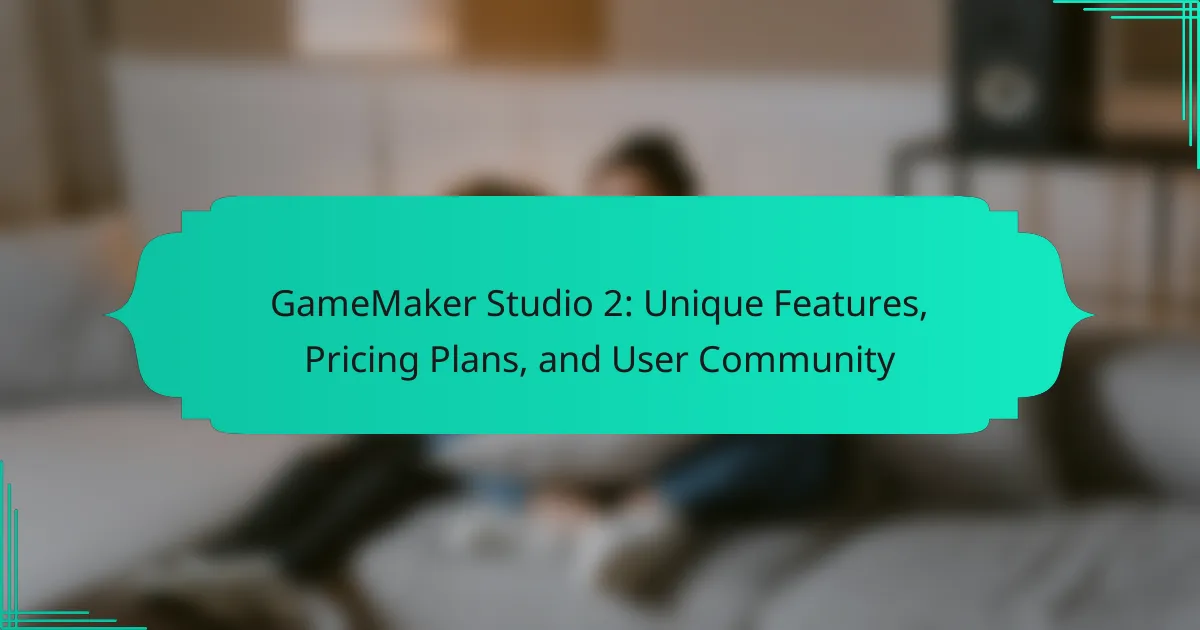GameMaker Studio 2 simplifies game development with its intuitive drag-and-drop interface and powerful scripting language. Explore its unique features, pricing plans, and the supportive user community. Learn how to leverage these aspects for effective game creation. Discover best practices to overcome common challenges faced by users.
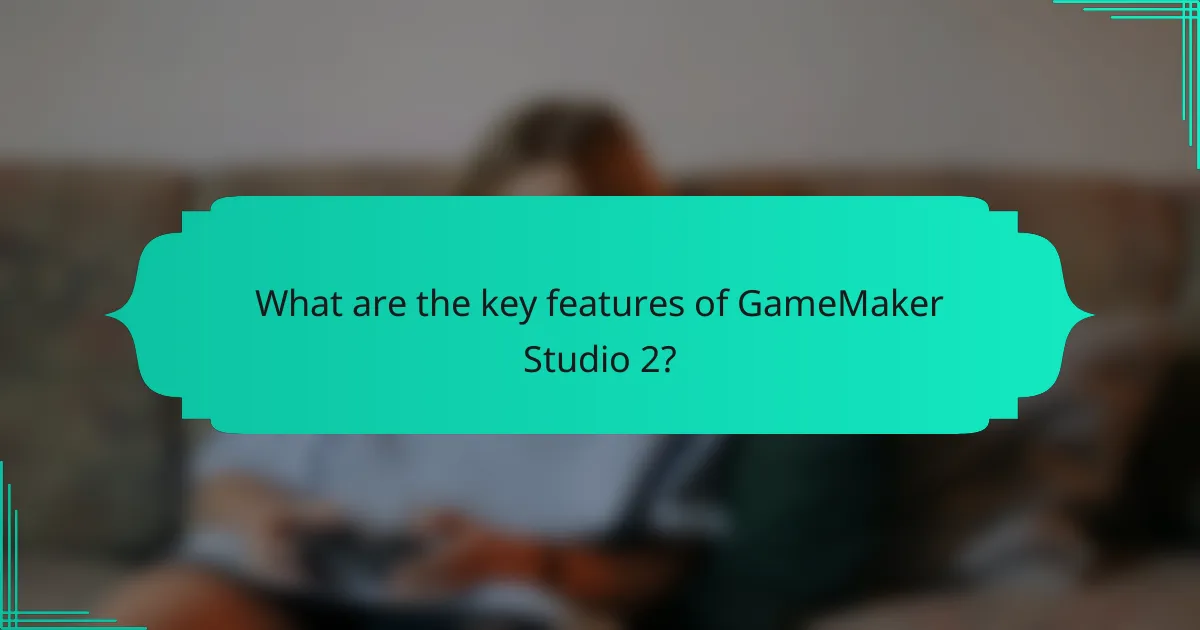
What are the key features of GameMaker Studio 2?
GameMaker Studio 2 offers a range of key features that enhance game development. It includes a user-friendly drag-and-drop interface, a powerful scripting language (GML), cross-platform export options, and a robust asset library. Additionally, it supports real-time collaboration and has an active user community for support. These features make it a versatile tool for both beginners and experienced developers.
How does the drag-and-drop interface enhance user experience?
The drag-and-drop interface significantly enhances user experience by simplifying game development. It allows users to visually manipulate game elements without coding, promoting intuitive design. This feature caters to both beginners and experienced developers, facilitating rapid prototyping and creativity. As a result, users can focus on gameplay mechanics rather than technical complexities, streamlining the development process in GameMaker Studio 2.
Which coding languages are supported within GameMaker Studio 2?
GameMaker Studio 2 supports GML (GameMaker Language) for scripting and also allows for integration with C++ through extensions. GML is designed specifically for game development, providing a user-friendly syntax. Users can enhance their projects by utilizing C++ for performance-critical components, making it a versatile choice for developers.
What tools are available for game design and asset management?
GameMaker Studio 2 offers a range of tools for game design and asset management. Its unique features include a user-friendly drag-and-drop interface, extensive asset library, and built-in coding language (GML). Pricing plans vary, allowing access to different features based on user needs. The vibrant user community provides support and resources, enhancing the overall experience for developers.
How does GameMaker Studio 2 support cross-platform development?
GameMaker Studio 2 supports cross-platform development through its built-in export options and user-friendly interface. Users can create games for multiple platforms, including Windows, macOS, Android, iOS, and HTML5, without needing extensive coding knowledge. The platform streamlines the process of adapting games for different operating systems, allowing developers to focus on creativity rather than technical barriers. Additionally, GameMaker Studio 2 offers robust documentation and a supportive user community, enhancing the development experience across platforms.
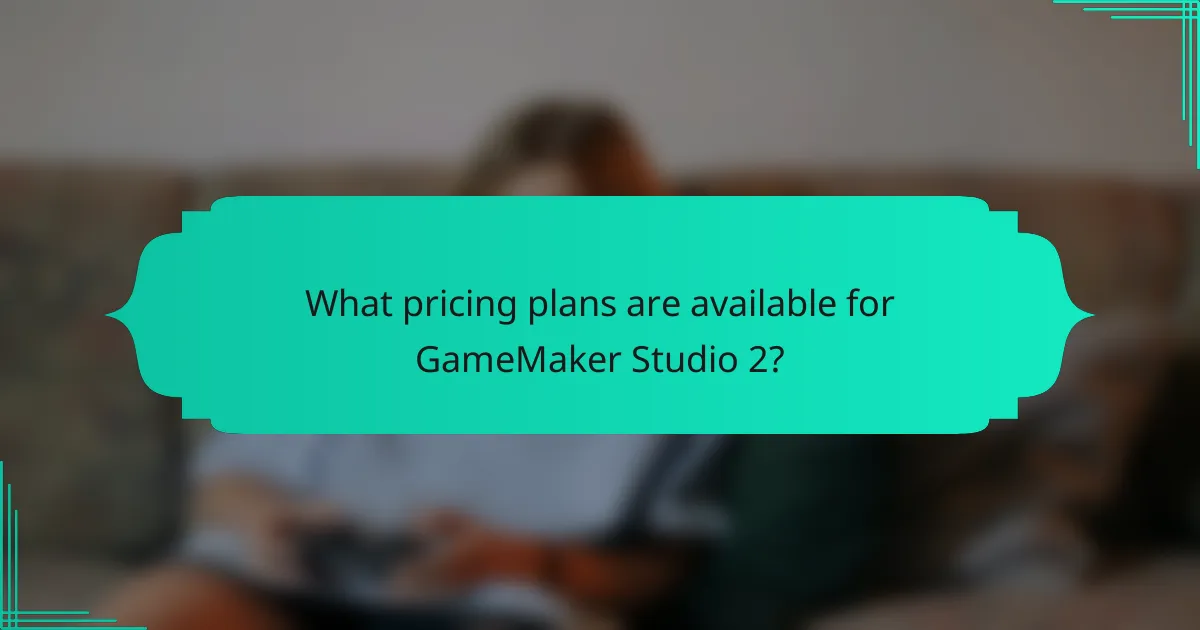
What pricing plans are available for GameMaker Studio 2?
GameMaker Studio 2 offers several pricing plans to accommodate different user needs. The available options include a Free version, a Creator plan at $39 per year, and a Developer plan at $99 per year. Each plan provides varying features, with the Free version being limited in functionality. The Creator plan is suitable for hobbyists, while the Developer plan targets professional developers seeking advanced tools.
What are the differences between the subscription and perpetual licenses?
The main differences between subscription and perpetual licenses for GameMaker Studio 2 are payment structure and access duration. A subscription license requires ongoing payments for continued access, while a perpetual license is a one-time purchase granting permanent access.
Subscription plans often include updates and support during the subscription period, whereas perpetual licenses may require additional fees for updates after the initial purchase. Users should consider their budget and long-term project needs when choosing between these options.
How do pricing tiers cater to different user needs?
Pricing tiers in GameMaker Studio 2 address diverse user needs by offering tailored features and access levels. Each tier supports varying skill levels and project scopes, ensuring affordability and flexibility.
The free tier allows beginners to explore basic functionalities, while the standard tier provides essential tools for indie developers. The professional tier includes advanced features for serious game developers, enhancing production capabilities.
These structured plans cater to users from hobbyists to professionals, allowing them to choose options that align with their specific project requirements and budget constraints.
What discounts are available for educational institutions and students?
GameMaker Studio 2 offers discounts for educational institutions and students, typically ranging from 20% to 50% off standard pricing. These discounts apply to both individual licenses and volume purchases for classrooms. Institutions can access these offers through direct contact with the sales team or via educational programs. Additionally, students may need to verify their status through educational email addresses or student ID.
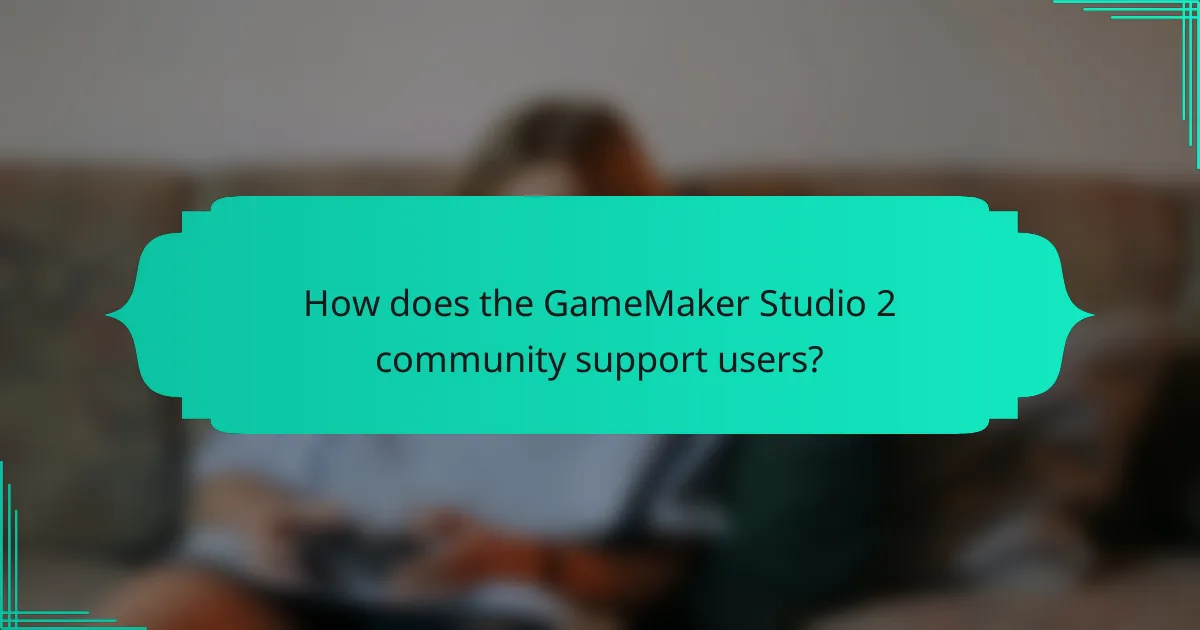
How does the GameMaker Studio 2 community support users?
The GameMaker Studio 2 community provides extensive support through forums, tutorials, and user-generated content. Users can ask questions and share experiences, fostering collaboration. Community resources include detailed documentation, video tutorials, and asset sharing platforms. This collaborative environment enhances learning and creativity, making it easier for users to develop their games effectively.
What forums and online resources are available for troubleshooting?
GameMaker Studio 2 offers various forums and online resources for troubleshooting, including the official GameMaker Community, Reddit, and Stack Overflow. These platforms provide user-driven support, tutorials, and discussions to address common issues and enhance user experience. Additionally, the GameMaker Documentation serves as a comprehensive resource for understanding features and resolving technical challenges.
How do user-generated tutorials and assets enhance learning?
User-generated tutorials and assets significantly enhance learning by providing diverse perspectives and practical examples. These resources foster community engagement, enabling learners to share insights and techniques. GameMaker Studio 2 benefits from this collaboration, as users create tutorials that address specific challenges, making the learning process more accessible and tailored. Additionally, the availability of user-generated content encourages experimentation, allowing users to apply concepts in creative ways.
What role do social media platforms play in community engagement?
Social media platforms enhance community engagement by facilitating communication, sharing user-generated content, and fostering collaboration. GameMaker Studio 2 leverages these platforms to connect users, share resources, and gather feedback. This engagement strengthens the user community, encouraging collaboration on projects and sharing of unique features. Additionally, social media enables users to access tutorials, updates, and discussions, enriching their experience with the software.
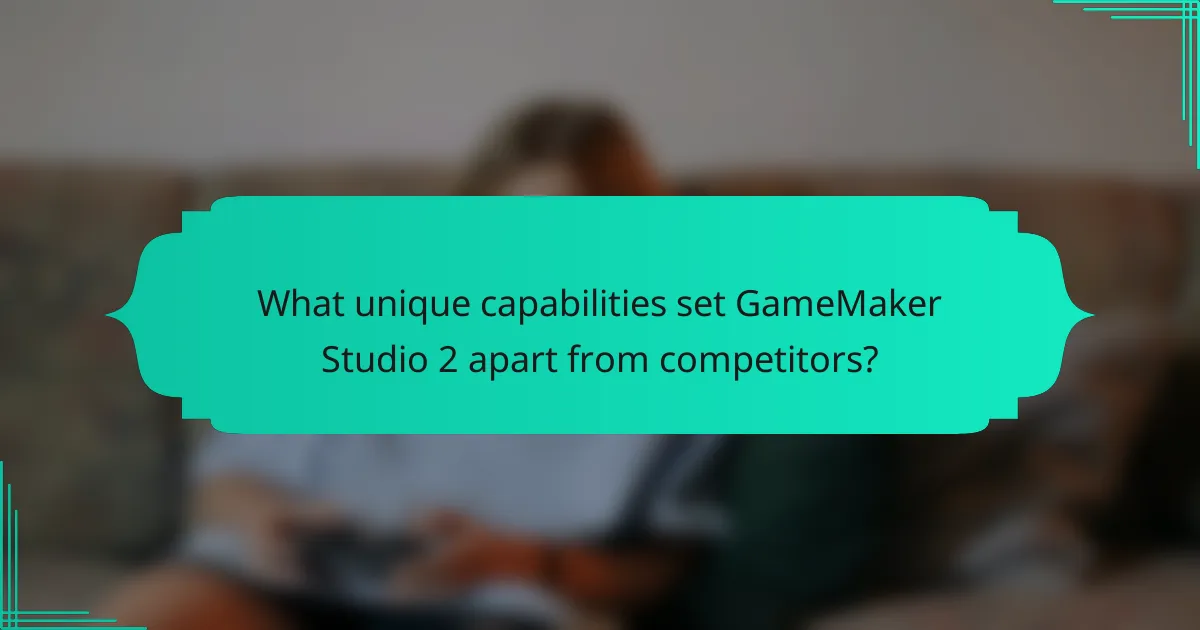
What unique capabilities set GameMaker Studio 2 apart from competitors?
GameMaker Studio 2 stands out due to its intuitive drag-and-drop interface, extensive asset library, and cross-platform deployment capabilities. It allows users to create games without extensive programming knowledge, enhancing accessibility for beginners. The unique attribute of real-time collaboration enables teams to work simultaneously, streamlining the development process. Additionally, its strong user community provides valuable resources, tutorials, and support, fostering a collaborative environment for developers.
How does the asset store contribute to game development flexibility?
The asset store enhances game development flexibility by providing a wide range of pre-made assets and tools. Developers can quickly access graphics, sound effects, and scripts, reducing production time. This resource allows for rapid prototyping and iteration, enabling teams to focus on gameplay mechanics. Additionally, the asset store fosters collaboration within the GameMaker Studio 2 user community, where creators share and refine their work. This unique attribute of community-driven content further enriches the development experience.
What innovative features are exclusive to GameMaker Studio 2?
GameMaker Studio 2 offers several innovative features exclusive to its platform. These include a user-friendly drag-and-drop interface, real-time collaboration tools, and cross-platform export capabilities. Additionally, it supports GML (GameMaker Language) for advanced scripting, enabling deeper customization. The integrated marketplace allows users to share and sell assets, enhancing community engagement.

What common challenges do users face when using GameMaker Studio 2?
Users of GameMaker Studio 2 commonly face challenges such as a steep learning curve, performance issues, limited 3D capabilities, and occasional bugs. These factors can hinder the user experience, especially for beginners. Additionally, the documentation may not cover all scenarios, leading to confusion. Community support is available but can vary in responsiveness and quality.
How can users troubleshoot performance issues effectively?
Users can troubleshoot performance issues in GameMaker Studio 2 by following systematic steps. First, check system requirements to ensure compatibility. Next, optimize project settings by reducing texture sizes and disabling unnecessary features. Monitor performance using the built-in profiler to identify bottlenecks. Lastly, consult the user community forums for shared experiences and solutions.
What are the limitations of GameMaker Studio 2 in game development?
GameMaker Studio 2 has limitations that can impact game development. Key constraints include a lack of advanced 3D capabilities, which restricts developers aiming for complex graphics. Additionally, the engine’s performance can suffer with larger projects, leading to slower load times and potential lag. The licensing structure can also be a barrier, as certain features are only available in higher-priced tiers. Lastly, the community support, while active, may not match the breadth found in more widely used engines.

What best practices should users follow for optimal game development?
To achieve optimal game development in GameMaker Studio 2, users should follow several best practices. First, utilize the built-in tutorials and documentation to understand the platform’s unique features. Second, engage with the user community for support and feedback, which enhances learning and problem-solving. Third, plan game design meticulously, focusing on mechanics, aesthetics, and user experience. Finally, regularly test and iterate on the game to refine gameplay and fix bugs, ensuring a polished final product.
How can users leverage community feedback for game improvement?
Users can leverage community feedback to enhance game quality and engagement. GameMaker Studio 2 fosters a vibrant user community that actively shares insights and suggestions. Engaging with this feedback can help developers identify bugs, improve gameplay mechanics, and refine user experience. Regularly monitoring forums and social media channels allows users to gather diverse perspectives, ensuring that updates align with player expectations. Additionally, incorporating user suggestions can lead to innovative features that enhance the overall game appeal, fostering a loyal player base.
What strategies enhance collaboration among team members using GameMaker Studio 2?
Utilizing collaboration tools within GameMaker Studio 2 enhances teamwork among developers. Features like version control, shared assets, and integrated communication channels foster seamless cooperation. Regular team meetings and clear role assignments further improve project alignment. Establishing a shared project repository encourages feedback and iterative development, strengthening team dynamics.
